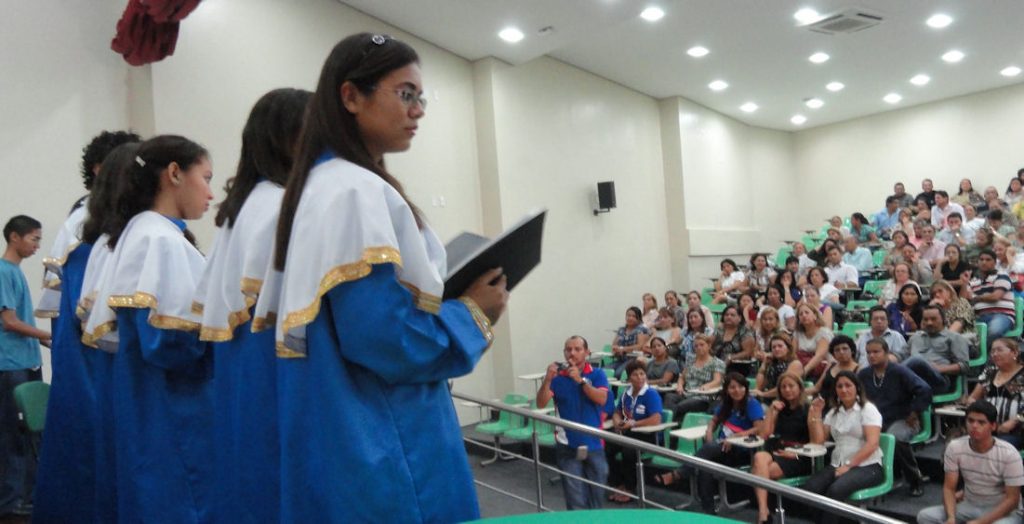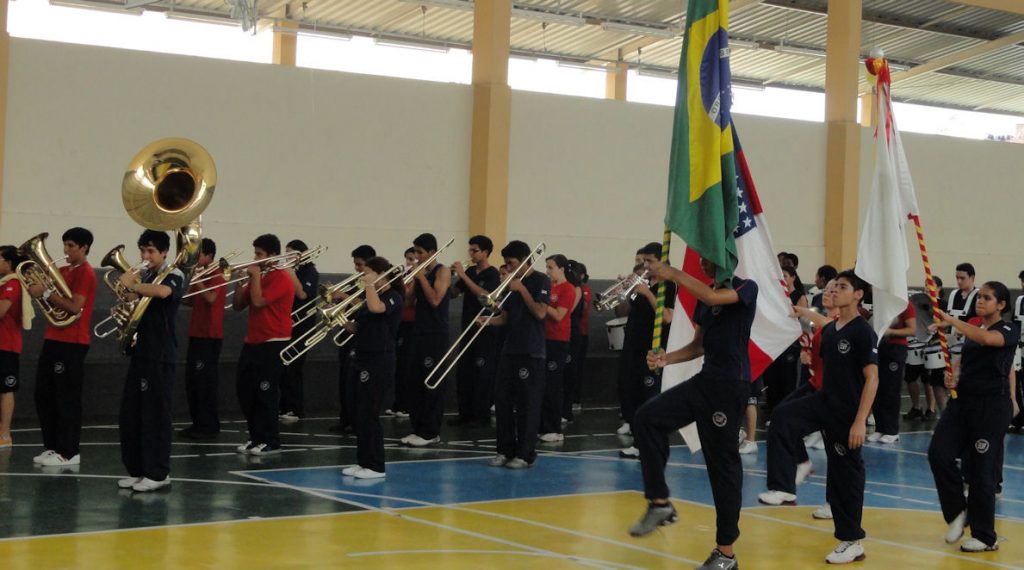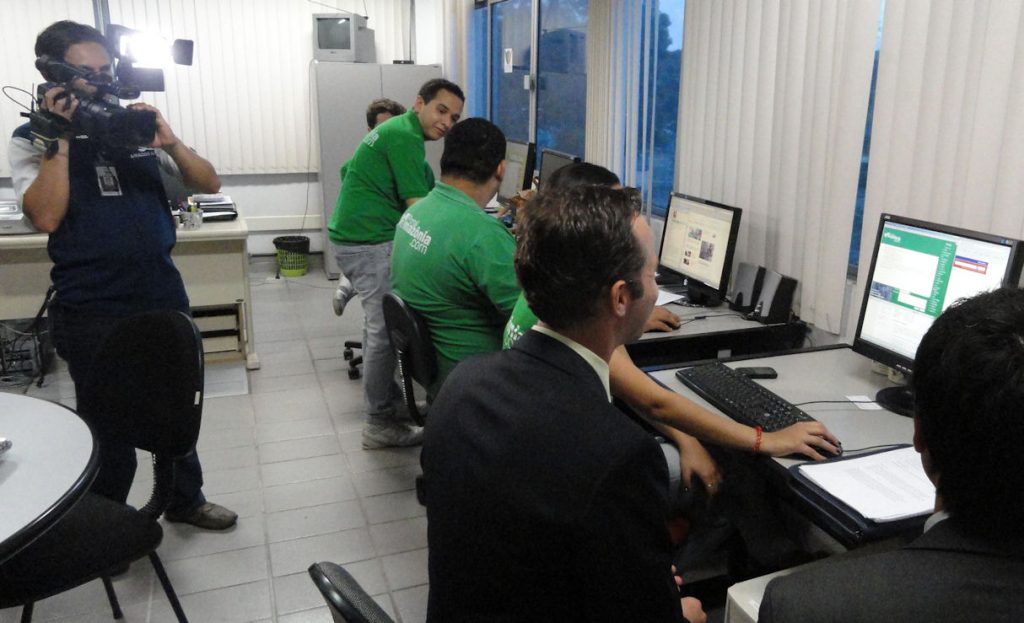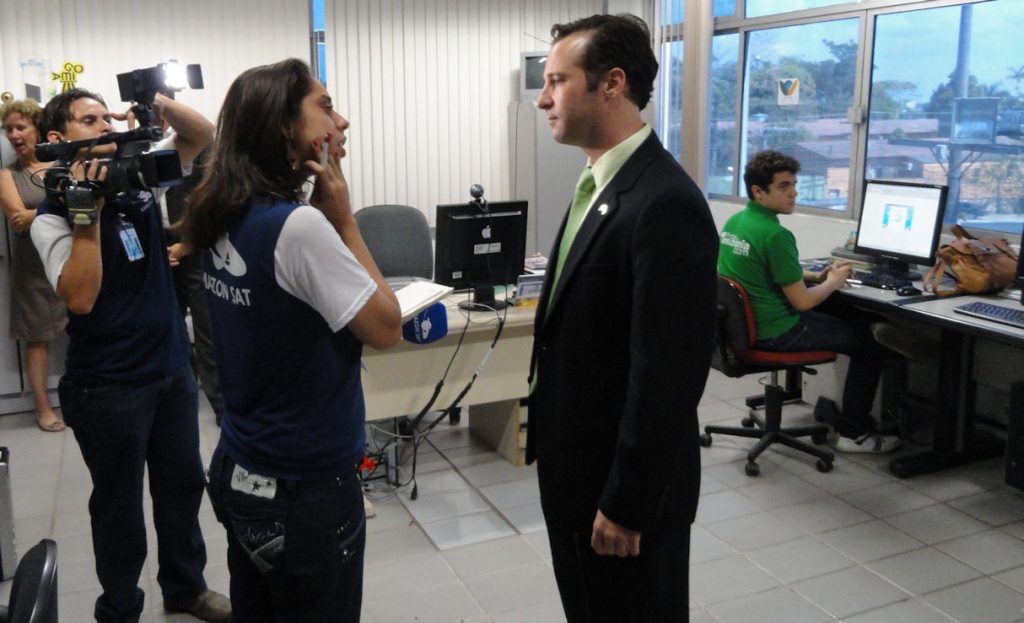
Reaching youth audiences in a meaningful way is a perennial challenge for public diplomacy. We sometimes pander to them, trying to supply vacuous messages in a pathetic attempt to be cool. I don’t like this. We (USG) are not cool in the adolescent way and I don’t want us to be. But I think we already have nearly perfect vehicles for sustained contact with youth. We may not appreciate them because we have been using them for a long time but we have not been using them in the same old ways.
I wrote a note about our BNCs earlier here & here. So far, I have visited BNCs in Rio, Recife, São Paulo and Manaus and that has made me more certain than before that this is a great vehicle. We reach thousands of young people with almost no direct cost to the U.S. taxpayers. BNCs have also played parts in a couple other great programs, that I will describe below. It is the synergy that we are always seeking.

For example, one reason I went to Recife and Manaus last week was to follow up on participants in our youth ambassador program. Young Brazilians went to the U.S. a few months ago. Most of the winners were chosen with the help of the BNCs. The BNCs also did follow up programs with runners-up, as I described in an earlier post here & here. Now they are hosting Americans coming to Brazil as the counterpart of the program. It is a great experience for the young Americans, but it is even more important to the young Brazilians they meet. The program lets us reach all parts of Brazil. Each of the youth Ambassadors personally interacts with hundreds of Brazilians. Through social media and traditional media (they are interviewed in newspapers, radio and TV) they reach even more. One reason this is so effective is that they are in smaller centers too. An official American is a bigger deal in Manaus than in São Paulo and an even bigger deal in Rio Branco or Boa Vista.
In Manaus, I had planned to meet the four American youth Ambassadors who went there. So I invited them to a meeting. I had not counted on all their new Brazilian friends and former Brazilian youth Ambassadors. I ended up with twenty kids at Pizza Hut, excitedly talking about America with me and with each other. They want to know about … everything. They commented that they couldn’t believe that American diplomats could be so open and eat so much pizza. They had a image of us with three-piece suits. The Pizza Hut encounter changed their minds. I am not saying that twenty kids will change the world, or our image here, but, as I wrote above, they talk. It was touching that they worried about spending my money and wanted to chip in for the check. It cost about $R20 a person. We can afford that and it was money well spend. I think I will try to regularize these kinds of meetings with young people. I used to do it a lot in Poland and it worked well. Kids everywhere like pizza. Me too.
The other program I have been following around is the Brazil-U.S. Principal Exchange Program. This one takes the best principal from Brazil and sends them to work with schools in the U.S. It is followed by some of the best American principals who come to Brazil. Each group studies the work of the others and suggests exchanges of best practices. These educators go to places where Americans are less common, like Acre, Tocantins, Mato Grosso or Rondonia. They reach thousands personally and maybe millions through the media.
I spent the morning in Manaus with the principal that went to Amazonas & Acre. Her name was Sandra Boyles and she was a principal in the State of Georgia. She made her report to the State Secretary of Education in Amazonas at a big assembly of school leaders from throughout the state. They met us – literally – with a band and a choir.
I talked to the Secretary of Education Gedeão Timóteo Amorim during lunch that followed the program. I have rarely found anybody so satisfied with one of our programs. He said that he had spoken with the principals that went from Amazonas and that his staff had lots of ideas for following up. In fact, our current good situation is a partial follow up to an even to an earlier program. This guy was an IVP. He told me that he got many ideas about distance educations during his official visit to the United States. Amazonas is mostly rain forests and it has few roads. People have to travel hours by boat along the rivers or they have to fly. Amazonas today has one of the best organized distance learning systems in the world. And we helped; our program made a big difference. And the authorities in Amazonas recognize and appreciate it.
Our principal was treated like a rock star by the HS students and she told me that this had been her experience during his whole time in Acre and Amazonas. Students, teachers and administrators flocked around to have their picture taken with us or to offer their words of English. With the social media, they are sharing these pictures and sharing their experience. She told me that it had been like this during her whole trip. The other principals confirmed this with their own stories. I lost track of the number of times I heard some variation of “Americans are so much better than we thought from the news or movies” I heard from the kids.
I am certain that we will have had a lasting positive effect on Brazilian education and I think the exchanges of ideas will have a lasting positive impact on U.S. education. But strictly from the public diplomacy point of view, I don’t think we could have made a greater impact on youth audiences in any other way. These programs work.
As much as we want direct contact with the youth audiences – future decision-makers- which these programs give us, I still believe in the imperative of reaching current decision makers. This exchange program got us in close personal contact with decision-makers like principals, politicians and state secretaries of eduction who will decide what to do now. The principal I was working directly with in Amazonas has impact in the states of Amazonas and Acre. This program also sent principals to Alagoas, Ceará, Espirito Santo, Goiás, Mato Grosso, Mato Grosso do Sul, Minas Gerais, Paraná, Pernambuco, Rio de Janeiro, Rio Grande do Norte, Rondonia, Roraima, São Paulo, & Tocantins. Suffice to say that the got to places were our public diplomacy would not otherwise reach. They talked to people we would not otherwise meet and had experiences we will never have. Beyond that, there is a network that has been created. This year’s principals are benefiting from those that went before and so shall it be in the future. I repeat because it bears repeating that the American nation is greater than the American government. A program like this lets our public diplomacy leverage the power of the American nation.
I also repeat again – just about everything we do in public diplomacy is simple. Success depends on energy and persistence in the application of things almost all of us know to do. We have to get out of the offices and among the audiences, fewer meetings with each other and more meetings with audiences. And we have to leverage the efforts of others. We all know that. It is simple, but maybe not easy to do. My first weeks have included lots of travel and literally hundreds of meetings with Brazilians. This “boots on the ground” approach is also something that works. I hope I have the energy to keep it up and to keep up with the Brazilians.

One more thing to add about our youth outreach. We are using the interaction of old and new media very well. During my stop at the TV Globo in Manaus, I ran into two of our vice-consuls, Dustin Salveson & David Fogelson doing TV and then online interviews about visas. Nothing is we do really more interesting to Brazilian audiences than visas. There are lots of myths and misconceptions. Almost all Brazilians now who seek visas get them. This is a change from years ago, but many people still believe the old system is still in place.

Beyond that, there is essentially no wait for student visas. I asked our vice-consuls to repeat that early and often. You have to repeat the same message over and over. It gets boring for you to do it, but we have to remember that most people are hearing it for the first time and even if they heard it before, they probably did not pay attention. Our vice-consuls did a great job. You can see the pictures of the “event”. This is a trifecta. We get television, live-online interview and a written record.
I believe that you have to understand before you can try to be understood, which is why I am doing so much contact work and travel in Brazil. I am learning a lot and my Portuguese is improving too. The more I see of what we are doing in Brazil, the more encouraged I become. Our colleagues of the past laid a great foundation and our colleagues now of doing a great job. Beyond that and most important, the Brazilians like and appreciate what we are doing. I have always been lucky with my posts, but this one seems to be beyond great fortune.
